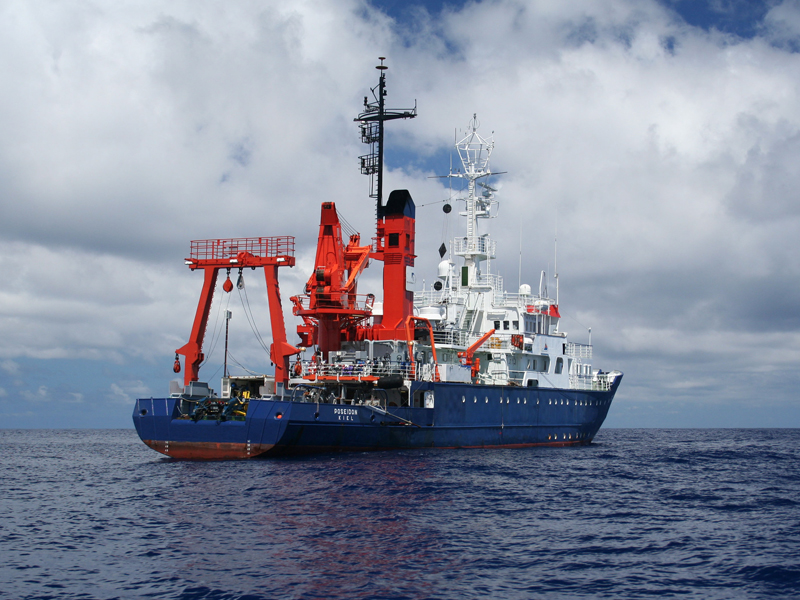POSEIDON POS519
- Area:
- NE Atlantic
- Time:
-
22.01.2018 - 11.02.2018
- Institution:
- GEOMAR
- Chief scientist:
- Tobias Steinhoff (10 attendees)
Eastern Boundary upwelling systems (EBUS) are well known to be highly productive regions. Water from deeper layers is brought to the surface and transports high loads of nutrients and trace gases (e.g. CO2, N2O) and water that is low in oxygen. Due to their geographical location in the tropics/subtropics enough light is available to start strong biological productivity. While water masses move away from the coast to the open ocean trace gases as CO2 and N2O are released to the atmosphere while oxygen is taken up. At the same time CO2 is consumed by biological production and oxygen is produced. Due to this high productivity surfactants are building up at the sea surface. This surface micro layer (SML) is known to dampen air-sea gas exchange. Here we propose to deploy a drifter in a fresh upwelled water parcel in order to follow the water parcel for a time period of 15 days. During this time an extensive measuring program will be conducted consisting of continuous measurements of trace gases in the upwelling patch and the overlying atmosphere, direct flux measurements of CO2, regular determination of the SML and measurements of the physical conditions of the water parcel. This sampling strategy will enable us to unravel the different biological, chemical and physical processes in the upwelling parcel and foster our knowledge about the impact of EBUS on global scales.



